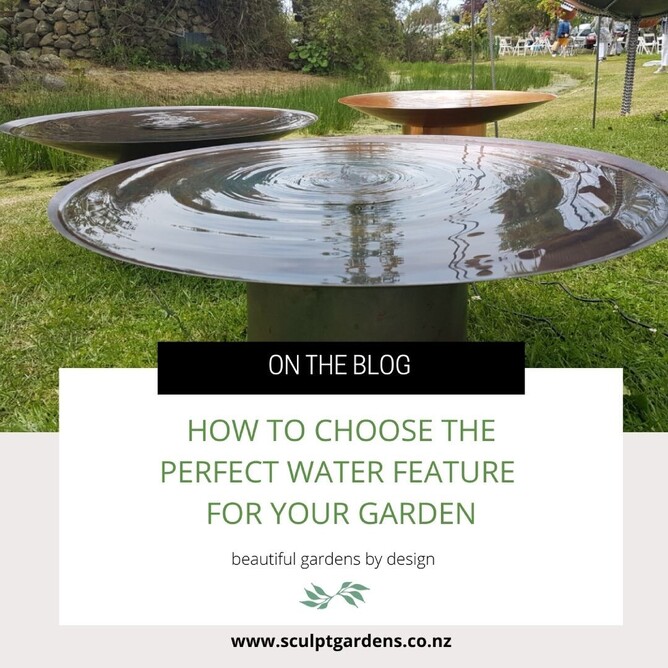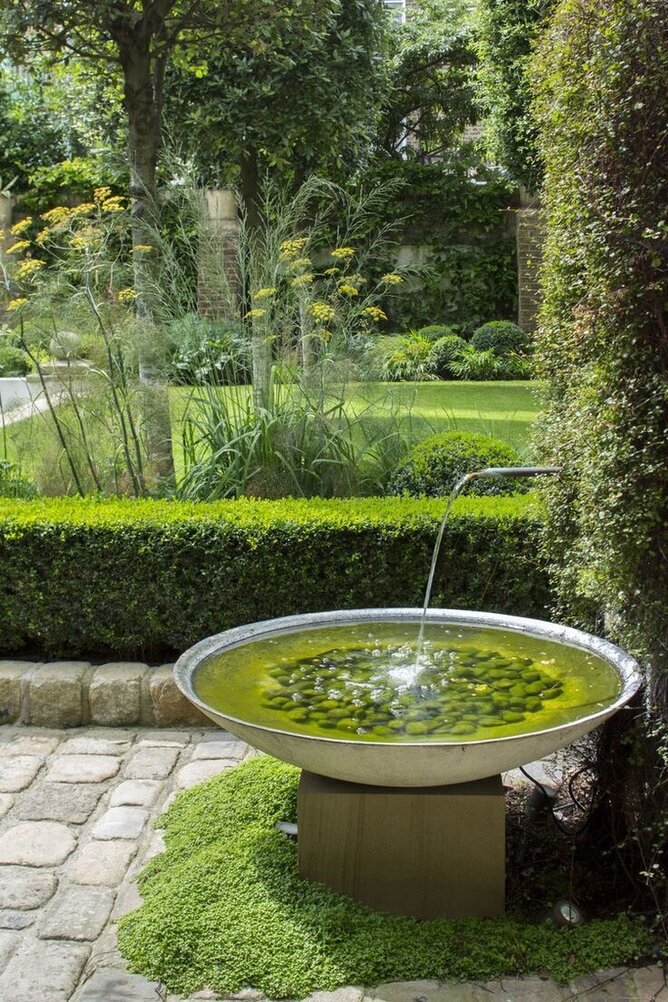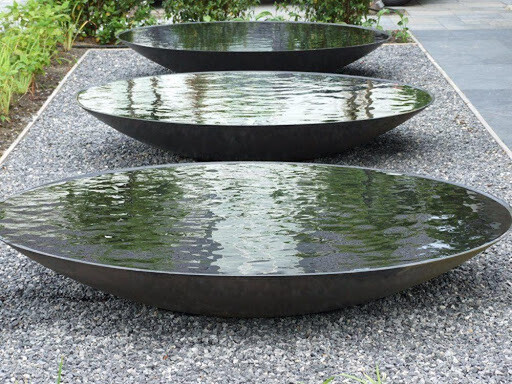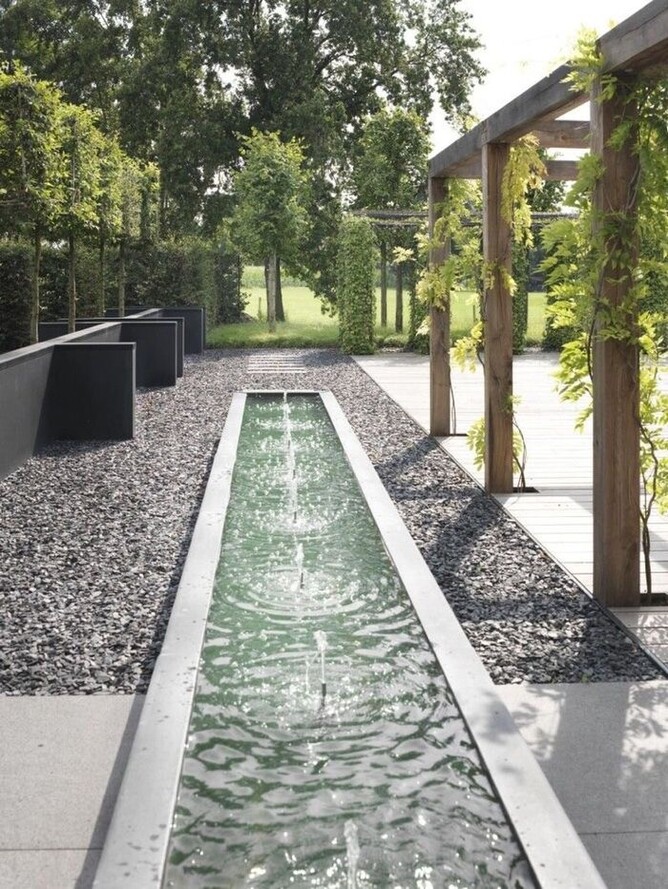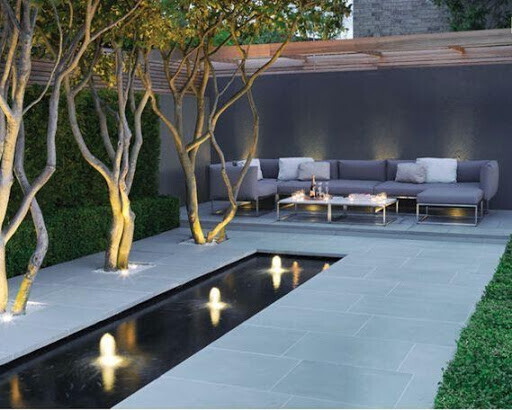Have you ever thought about incorporating a water feature into the design of your backyard, but unsure where to start?
Water invokes feelings of calmness, serenity and balance. Your garden likely already includes many
of the five zodiac elements – wood, fire, earth and metal...is water the missing link to creating your
balanced backyard paradise?
While we might usually associate the sounds of running water with the wild, you can absolutely
incorporate a slice of the great outdoors into your own Auckland residential landscape. All it takes is
a little bit of careful landscape design planning.
Read on for some insights and tips on how to start, how to plan, and how to design your very own water feature.
1. Decide your landscape design budget
How much will it cost to add a water feature to my garden
Your budget can be anywhere between the range of basic to grand and is the very first thing you should consider when undertaking a project. It will affect the size, scale, fabric and extra details you can incorporate into your design.
Cost-effective
There are plenty of ideas that are cost-effective, easy to assemble and just as striking as a more pricey project - we have seen many beautiful ideas in the backyards of our clients.
Try these ideas on for size:
● Use large stone bowls with polished aqua blue interiors - filled with water and placed
alongside a pathway, the reflections draw the eye down, creating an inviting welcome to
explore the gardens ahead. This is a favourite of mine!
● Combine a water feature with some tropical planting, and you have a tropical rainforest in
the comfort of your own home (without breaking the bank!)
● Consider repurposing a large serving bowl from your kitchen, or pot with a sealed bottom, or
a ripple dish.
In the Auckland rain, the bouncing water drops and ripple effect make the wet weather worth it. If you’ve ever watched a waterway on a rainy day, you’ll know the feeling of serenity a water feature can bring!
Upscale
The design and materials of bigger, more permanent water features will increase the price. In-ground ponds may require a contractor or council permit, depending on your local regulations.
These may be built with concrete, or include tiling. Otherwise, they can be made with PVC liners as a
more budget-friendly, and DIY-friendly option.
Lastly, you have to consider the costs of lighting, bubblers, fountains and filters. These extra
additions all add up, but can add extra eye-catchiness to your water feature. They do, however,
mean that your water feature must be near to, or have access to, a power source.
2. Plan for Maintenance
Nobody likes unnecessary work, and differences in the structure of your water feature will change the amount and type of maintenance required - you need to consider where you place your water feature, and what you put in it.
Biotic factors (fish and plants) add life and a sense of the natural world, as well as create colour, patterns and interest. They’ll also require a much higher water quality. It may be necessary to test your water feature regularly and add chemicals as needed - additionally, features such as these need adequate filtration to remove any nasties and keep the water clean.
Fish often need a little shade to protect them from overheating, but be careful of any falling berries or leaves that may create harmful or toxic water conditions. You’ll also need to consider that with higher light exposure comes higher water evaporation.
Placing a pond or water feature underneath a tree will naturally result in leaf litter accumulation and higher maintenance requirements. Large tree roots may also cause fissures in concrete structures.
It’s important to consider all of these factors before placing and building your water feature, to avoid problems later down the track.
3. A theme to suit your landscape design
Now that the practical side of your project is sorted, it’s time to let your creativity flow.
After deciding your budget you need to think of a theme that fits the landscape design of your backyard, the conditions of Auckland weather, and how you want to incorporate a water feature.You may:
- Want a water feature that is striking, standout and unexpected.
- Need a water feature to blend into your existing garden
- Not have a garden yet and are planning everything from scratch!
Wherever you land in your planning and preparation, let your creative spirit flow!
If you’re really stuck we suggest taking a look at what we have to offer at Sculpt - we have a range of landscape design services and specialise working in the North Shore of Auckland.
4. Western and Eastern landscape design
According to Human Geography, there are two opposing types of gardens that have innate references to the place of humans in nature.
Western gardens (or formal gardens)
These are usually designed to be more structured, ordered and neat – think straight lines, perfectly pruned hedges and topiary trees. The water features in formal gardens often mimic these style guides; think symmetry, structured shapes, and classical or renaissance style. Fountains play a huge part in these types of design - they incorporate an element of human creativity into a natural space.
The direction of water against gravity again demonstrates the ability of humans to have domain over the natural environment.
Fountains can incorporate an element of human creativity into a natural space.
If your garden uses spherical shrubs and topiary, try placing a round bubbler or fountain in your garden to mimic patterns within your plants.
If your planting follows straight lines or boundaries, long and rectangular shapes will help to enhance this structure. Structure is the key to formal gardens – think orderly, organised and visually complementary.
In formal gardens, water does not need to be portrayed in its natural state. You have the freedom to add water features with design details (spouts, fountains, lights).
With formal gardens, the water itself can be a standout structure of grandeur.
Eastern gardens (or informal gardens)
On the other hand, Eastern gardens tend to mimic nature.
Japanese bonsai is a great example of this. The houseplant, while heavily kept by the human hand, is cultivated in a way to reflect the structure of natural trees in the wild. As such, if your planting is looser, with fewer straight lines than lush and dense spaces, your water feature might be best suited to the styles of ponds, streams and waterfalls. For these landscape designs - think boulders, stones, winding shapes and curving lines. Overhanging greenery into your blue spaces will add to the effect, rather than create problems.
The more natural and free, the better.
Of course, there is no restriction on what you can and can’t do – a well-designed fountain will look just as fabulous in a jungle of colour as it will in a courtyard of Buxus hedging. The sky's the limit. Stylistic interpretations should be used solely as guidelines and ideas, rather than fixed rules. Here is a classic example of this - a French renaissance-style seating and courtyard are highlighted by a winding stream and rockery.
Another popular style of gardens is tropical. Typically, tropical planting is accompanied with a modern style of architecture and design, as both reflect big, bold patterns that are often plain but impact making.
Tropical gardens would suit almost any style of water feature. Greys, blacks and stone would create a more complementary and understated impact. For a more standout effect, try contrasting a white water feature with the deep green of tropical foliage.
From plans to action - get creating!
Hopefully these ideas have helped you set the wheels in motion for your very own perfect water feature...a slice of the natural landscape in your own backyard.
If you’re a DIY lover, then there’s never been a better time to get into your next project. If you’re Auckland based and after advice on water features and landscape design, where to buy, or what to plant, we would love to discuss options with you!
